Movies
Outfest 2017 best of show
Jury and Audience award winners
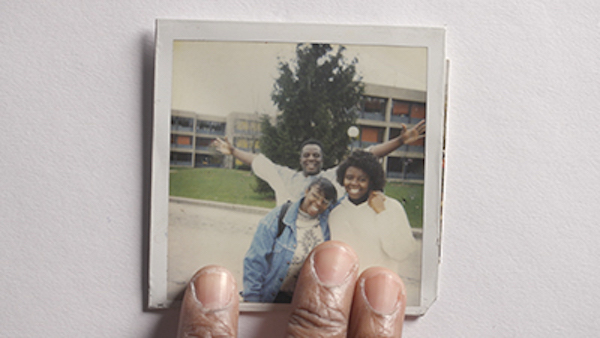

David France (‘How to Survive a Plague’) probes the mysterious death of early LGBT activist Masha P. Johnson. (Photo by Amanda Rubin)
2017’s Outfest is now in the rearview mirror and the race is now on to find a way to capitalize on the show. Directors and producers, after being awarded, will continue on the film festival circuit and some will wide-release while others will continue looking for distribution deals.
But there were clearly some great competitors and entries.
After 11 hot and heady July days of premieres, parties, stars, screenings, talks, tears, laughter and applause, Outfest’s fantastic 35th anniversary edition is now a wrap. But if you missed any of the festival’s film highlights, never fear: Many of Outfest 2017’s top selections, including several of its Jury and Audience award winners, are coming back soon to theaters, TVs and monitors near you.
Here’s what to watch for, and when.
4 DAYS IN FRANCE (Jours de France)
Opens August 11, Ahrya Fine Arts
With Grindr as one of its main plot-drivers, this quirky French dramedy follows 30-something Pierre as he curiously leaves Paris to head into the countryside for a series of random social and sexual encounters, while his distraught partner Paul tries to track him via the gay dating app.
Opens August 25, theater(s) TBA
Writer-director Eliza Hittman took home the Outfest prize for Best Screenwriting in a U.S. Feature for this outer-edge-Brooklyn tale of 19-year-old Frankie (talented UK hottie Harris Dickinson), whose raging manlust is at odds with the working-class bro life he cultivates with his boardwalk-hanging buddies.
Prmeieres August 25, Showtime
This controversial documentary delves into some of the biggest behind-the-scenes rumors about Whitney Houston’s life, including her allegedly intimate relationship with long-time assistant Robyn Crawford, and attempts by the star and others to battle her addictions.
Opens September 8, Laemmle Royal
Outfest’s International Grand Jury Prize went to this powerful South African story of Xolani (out musician Nakhane Touré), who, during his annual pilgrimage to his rural tribal homeland to help initiate boys into manhood, has his deepest secret threatened by a rebellious young ward.
KEVYN AUCOIN: BEAUTY AND THE BEAST IN ME
Premieres September 14, Logo
Celebrity makeup artist Kevyn Aucoin is profiled in this biography that’s both fabulous and touching, largely made with footage Aucoin himself shot while making up some of the world’s top models and celebrities, including Cindy Crawford, Linda Evangelista, Cher, Janet Jackson, Liza Minnelli and Tina Turner.
Opens September 15, Monica Film Center
Winner of the Special Jury Award for Storytelling at this year’s Sundance Film Festival, this moving doc is trans filmmaker Yance Ford’s exploration of his brother’s murder on Long Island 25 years ago, and its permanent repercussions on his family.
CHAVELA trailer from Aubin Pictures on Vimeo.
Opens October 6, theater(s) TBA
Iconic Mexican singer Chavela Vargas is fondly remembered in this film — winner of Outfest’s Audience Award for Best Documentary — that traces her life as an unapologetically macho and woman-loving belter of poignant ranchera ballads who was nearly silenced at one point by her own hard-drinking ways, only to have a late-career rebirth of even greater international fame.
Opens October 27, theater(s) TBA
In this very male romance that’s been called “the British BROKEBACK MOUNTAIN,” young Yorkshire sheep farmer Johnny has resigned himself to a bleak and loveless life, until the arrival of studly Romanian migrant worker Gheorghe changes everything. The film won the World Cinema Directing Award at this year’s Sundance Film Festival.
THE DEATH AND LIFE OF MARSHA P. JOHNSON
Opens in October, exact dates & theater(s) TBA; later to Netflix
When the body of pioneering LGBTQ rights activist Marsha P. Johnson was found in the Hudson River in 1992, her death was deemed a suicide by the NYPD. This long overdue documentary, which picked up Outfest’s Programming Award for Freedom this year, traces Johnson’s courageous life, and reinvestigates the possible causes of her death.
Opens in November, exact dates & theater(s) TBA
This crowd-pleasing Outfest 2017 closing night film stars Alex Lawther (THE IMITATION GAME) as the unapologetically flamboyant Billy Bloom, who shakes things up at his conservative Florida school by running for homecoming queen. Bette Midler and Laverne Cox costar in the adaptation of a James St. James story.
Opens late 2017, dates & theater(s) TBA
The winner of Outfest’s Best US Narrative Feature Film prize this year is the lighthearted and tender story of somewhat-repressed thirty-something Chicagoan Zaynab, who falls for extroverted Mexican-American Alma, all the while discovering lucha libre wrestling as a release from the pressures of taking care of her Pakistan-born mother (played by Indian actress Shabana Azmi, who starred in the groundbreaking 1996 Indian lesbian-themed film FIRE).
Opens late 2017, dates & theater(s) TBA
Icelandic director Erlingur Thoroddsen won this year’s Programming Award for Artistic Achievement for his taut and beautiful thriller, in which Gunnar follows his ex-boyfriend Einar into Iceland’s rugged and haunting countryside, where, as they re-face the forces that drove them apart, someone or something is out to get them.
THE UNTOLD TALES OF ARMISTEAD MAUPIN
Opens late 2017, dates & theater(s) TBA
Director Jennifer M. Kroot (TO BE TAKEI) profiles author Armistead Maupin in this loving documentary, tracing his journey from Southern aristocrat to closeted conservative to chronicler of San Francisco gay culture, via his newspaper-serial-turned book-series Tales of the City.
I DREAM IN ANOTHER LANGUAGE (Sueño en otro idioma)
Opens late 2017, dates & theater(s) TBA
When a young university linguist travels to a small Mexican jungle town to save a dying language, he discovers that its last two native speakers haven’t spoken to each in decades — because, he finally realizes, they were once in love.
Movies
Looking through the steam: ‘Sauna’ and queer intimacy
Directed by Mathias Broe, ‘Sauna’ follows a rare trans-cis romance, unfolding inside Copenhagen’s sauna scene.
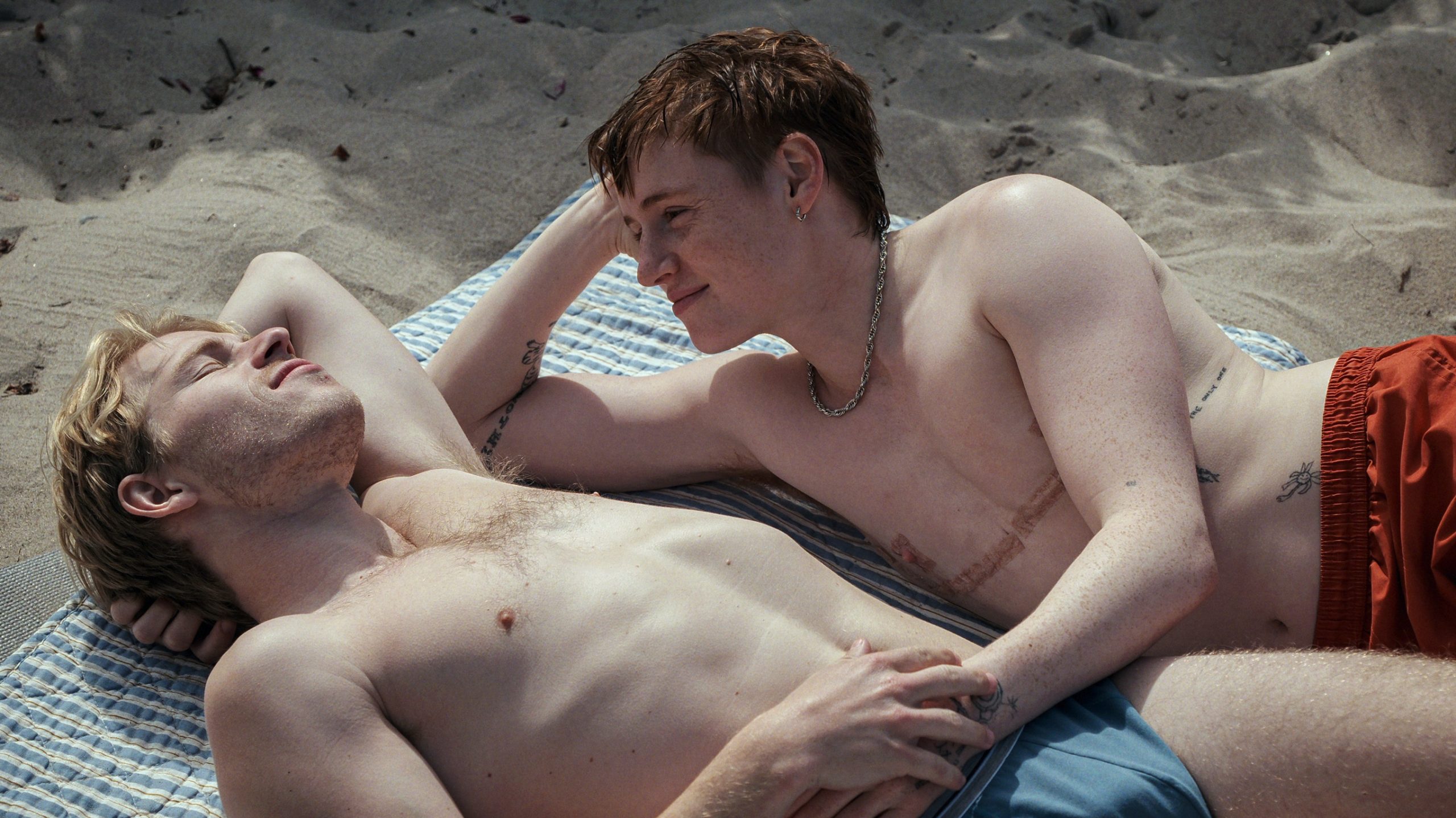
Sauna offers something rare in global queer cinema: a love story between a cis gay man and a trans gay man that refuses simplification. Releasing November 18 through Breaking Glass Pictures, the film marks Danish director Mathias Broe’s atmospheric adaptation of Mads Ananda Lodahl’s acclaimed book. Set amid the charged atmosphere of Copenhagen’s gay sauna scene, it traces the evolving bond between Johan, played by Magnus Juhl Andersen, and William, played by Nina Rask – two characters seeking connection in a world that often misunderstands them both.
Broe isn’t a festival-minded “queer indie” director so much as a working filmmaker embedded in his craft. When he spoke to the Blade, he called from a bus in Denmark, commuting between the film classes he teaches. The detail fits: his approach to Sauna is both grounded and nuanced, shaped by the rhythms of real life rather than industry polish.
For Broe, the film emerged from a desire to make queer life visible in a way that felt truthful to his own world. “I’ve been wanting to do a queer film as my debut film for a really long time … In Denmark, it’s been really hard to find films and stories that I could relate to,” he tells the Blade. When Broe set out to make Sauna, he pursued representation grounded in lived experience rather than abstraction, asking himself, “How do I get the people that I surround myself with onto the big screen?”
Though the film is groundbreaking for featuring Denmark’s first transgender actor in a leading trans role, Broe insists the focus remains on the humanity of its characters. “It was most important to talk about a love story first and foremost … The story is a very universal story about love and identity and belonging.”
Sauna is not a standard bathhouse memoir. It confronts the realities of being trans in cis spaces – and of being cis while dating trans people – inside a setting often mythologized as liberated but marked by its own exclusions. For American readers, the sauna functions much like a bathhouse: a place where intimacy is typically low-commitment and fleeting. Johan moves through it in exactly that way, cycling through encounters that rarely carry emotional weight. Broe said the film deliberately critiques this pace and disposability of app-mediated intimacy: “We wanted to show the side of Johan having these fast hookups and not really taking the time to actually look into who he was meeting.”
But Broe is quick to clarify that Johan is “longing to experience humans” instead of solely casual encounters. That longing crystallizes in his developing relationship with William – a connection that complicates Johan’s habits of fleeting intimacy. Without spoiling too much, the bond between Johan and William hovers somewhere between love and infatuation, a tension that deepens the film’s emotional stakes. Inside the sauna, this dynamic sharpens: the space becomes, as Broe puts it, “a labyrinth, an emotional landscape … searching in the dark… an image of his loneliness and longing.” It’s also where the limits of inclusion inside queer spaces come into view. Broe has seen audiences register this, noting that “a lot of cis gay men” have approached him after screenings saying, “Whoa, I never thought about this…”
The LGBTQ+ community is often described as inherently inclusive, but that narrative obscures both historical exclusions and the ones that persist today. Denmark – frequently imagined as a kind of queer utopia –illustrates this tension. “ I think it’s one of the safest places to be queer,” Broe tells the Blade, “But at the same time, the culture is quite conservative … language-wise and culture-wise, we’re very much behind.” He’s equally candid about the systemic barriers trans people face in healthcare. This pressure weighs heavily on William’s story in the film, where gatekeeping remains the norm: “Someone else has the power to judge if you are who you say you are … some doctor grants you access to who you are as a person.”
What keeps Sauna emotionally grounded is Broe’s insistence on flawed, human characters: “We have to create and tell a story about real human beings and not these flawless characters.” Johan’s arc throughout the film is intentionally non-linear. There is no classic hero’s journey or archetype that Johan fits neatly into. Broe insists that Johan “keeps repeating his own mistakes.”
In the end, Sauna expands queer cinema by refusing to neatly categorize its characters and audience. “We box ourselves so intensely in sexuality and identity,” Broe says, emphasizing that William’s story is central precisely because it challenges those boundaries. As he puts it, “The film tells the community that you can be trans and gay at the same time.”
Broe’s film asks viewers to sit with the messiness of love, transition, and vulnerability. In doing so, it opens a space – one that is steamy, dark, and perfectly imperfect – where queer stories can exist in all their complexity.
Movies
Sydney Sweeney embodies lesbian boxer in new film ‘Christy’
Christy Martin’s life story an inspirational tale of survival
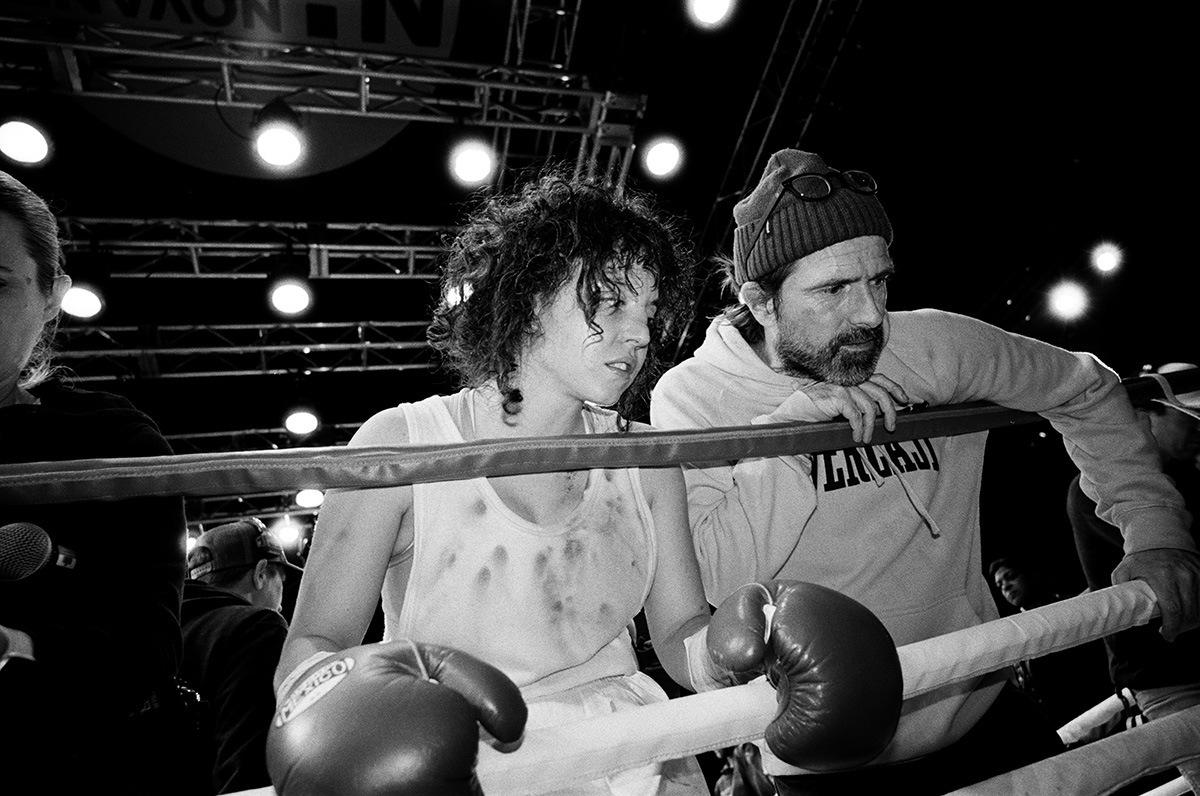
For legendary professional boxer Christy Martin, never in a million years did she expect to see the riveting story of her rapid rise to fame onscreen.
“When somebody first contacted me about turning my life into a movie, I thought they were joking,” Martin said at a recent Golden Globes press event for her movie, “Christy.”
“I was so afraid that my life would be as I call it, Hollywoodized.”
Martin was put at ease once she saw how committed co-screenwriters Mirrah Foulkes, and Australian filmmaker David Michôd were to the material, and how relentless actress Sydney Sweeney was to accurately portray her.
“Mirrah was very fair to me and treated me great on the paper … I feel like this is the most powerful group that could ever come together to tell my story,” she acknowledged.
In “Christy,” viewers see Martin’s combative spirit, in her ongoing quest to win each fight. Under her demanding coach turned manager-husband Jim Martin (played by Ben Foster), Christy is fearless in the boxing ring, yet increasingly troubled as she deals with the pressure of her mother, sexual identity issues, drugs, and a physically abusive marriage that almost ended in death.
“It’s crazy to see anybody, but especially Syd, become me,” she told the Los Angeles Blade. “It’s overwhelming! A little much for a coal miner’s daughter from a small town in southern West Virginia.”
For Sweeney, who is also a producer on the film, playing the courageous lesbian boxer has been a life-changing experience. “This is the most important character I have ever played. It’s the most important story I have ever told or will tell. It’s an immense honor to bring her to life.”
To become Martin, Sweeney worked hard to absorb as much information on her as possible.
“I had the real Christy, and then I had years and years of interviews and fight footage and her book and her documentary on Netflix that I was able to pull from. I like to build books for my characters, to create their entire life, from the day they’re born until the first time you meet them onscreen. So just kind of filling out the entire puzzle of Christy here.”
Sweeney said the many scenes where Martin’s mom couldn’t accept she was gay were immensely challenging to be a part of.
“That was probably one of the hardest scenes for me,” Sweeney noted. “I have very supportive parents, and I can’t imagine what it would be like to not have your mom or dad to turn to ask for help or guidance or just need support. So it was a very difficult scene to process.”
Equally challenging was the rigorous process Sweeney went through in order to become Martin in the movie.
“It was a huge physical transformation for me. I trained for two-and-a-half months before we even started filming, and I put on 35 pounds for the role, so it was a big transformation.”
As difficult as it was to deal with a film that dives into domestic violence, Sweeney was able to shake the character off when she was done at the end of each day.
“I have a rule for myself where I don’t allow any of my own thoughts or memories into a character. So when the moment they call ‘cut,’ I’m back to being Syd, and I leave it all in the scene, and that’s the story that I’m telling. Otherwise I’m just me; so I go home when I’m me.”
Martin hopes that audiences leave the theater with a sense of faith.
“I think we showed a path of how to get out of any situation that you might be in. And also, it’s very important to be true to you. Sometimes that takes a while — it took me a little while — but I’m happy to be true to me. And that’s what we want; the whole story is about being who you are.”
Sweeney would love viewers to walk away and demand to be “Christy Strong.”
“I hope that they want to be kind and compassionate to others around them, and be that helping hand. Christy’s story is singular, and yet her story of triumph, survival and continuation, supports those who are in experiences of domestic violence behind closed doors. She is one of the great champions.”
Sweeney loves that Martin is also a great advocate of new boxing talent. “That spark of life is something that I think at the end of the day, ‘Christy’ is about– it’s the spark to keep going and be who you are proudly.”
Movies
In solid ‘Nuremberg,’ the Nazis are still the bad guys
A condemnation of fascist mentality that permits extremist ideologies to take power

In any year prior to this one, there would be nothing controversial about “Nuremberg.”
In fact, writer/director James Vanderbilt’s historical drama – based on a book by Jack El-Hai about the relationship between Nazi second-in-command Herman Göring and the American psychiatrist who was tasked with studying him ahead of the 1945 international war crimes trial in the titular German city – would likely seem like a safely middle-of-the-road bet for a studio “prestige” project, a glossy and sharply emotional crowd-pleaser designed to attract awards while also reinforcing the kind of American values that almost everyone can reasonably agree upon.
This, however, is 2025. We no longer live in a culture where condemning an explicitly racist and inherently cruel authoritarian ideology feels like something we can all agree upon, and the tension that arises from that topsy-turvy realization (can we still call Nazis “bad?”) not only lends it an air of radical defiance, but gives it a sense of timely urgency – even though the true story it tells took place 80 years ago.
Constructed as an ensemble narrative, it intertwines the stories of multiple characters as it follows the behind-the-scenes efforts to bring the surviving leadership of Hitler’s fallen “Third Reich” to justice in the wake of World War II, including U.S. Supreme Court Justice Robert Jackson (Michael Shannon), who is assigned to spearhead the trials despite a lack of established precedent for enforcing international law. Its central focus, however, lands on Douglas Kelley (Rami Malek), a psychiatrist working with the Military Intelligence Corps who is assigned to study the former Nazi leadership – especially Göring (Russell Crowe), Hitler’s right-hand man and the top surviving officer of the defeated regime – and assess their competency to stand trial during the early stages of the Nuremberg hearings.
Aided by his translator, Sgt. Howie Triest (Leo Woodall), who also serves as his sounding board and companion, Kelley establishes a relationship with the highly intelligent and deeply arrogant Göring, hoping to gain insight into the Nazi mindset that might help prevent the atrocities perpetrated by him and his fellow defendants from ever happening again, yet entering into a treacherous game of psychological cat-and-mouse that threatens to compromise his position and potentially undermine the trial’s already-shaky chances for success.
For those who are already familiar with the history and outcome of the Nuremberg trials, there won’t be much in the way of suspense; most of us born in the generations after WWII, however, are probably not. They were a radical notion at the time, a daring effort to impose accountability at an international level upon world leaders who would violate human rights and commit atrocities for the sake of power, profit, and control. They were widely viewed with mistrust, seen by many as an opportunity for the surviving Nazi establishment to turn the fickle tides of world opinion by painting themselves as the victims of persecution. There was an undeniable desire for closure involved; the world wanted to put the tragedy – a multinational war that ended more human lives than any other conflict in history before it – in the rear-view mirror, and a rush to embrace a comforting fantasy of global unity that had already begun to disintegrate into a “cold war” that would last for decades. “Nuremberg” captures that tenuous sense of make-it-or-break-it uncertainty, giving us a portrait of the tribunal’s major players as flawed, overburdened, and far from united in their individual national agendas. These trials were an experiment in global justice, and they set the stage for a half-century’s worth of international cooperation, even if it was permeated by a deep sense of mistrust, all around.
Yet despite the political and personal undercurrents that run beneath its story, Vanderbilt’s movie holds tight to a higher imperative. Judge Jackson may have ambitions to become Chief Justice of SCOTUS, but his commitment to opposing authoritarian atrocity supersedes all other considerations; and while Kelley’s own ego may cloud his judgment in his dealings with Göring, his endgame of tripping up the Nazi Reichmarschall never wavers. In the end, “Nuremberg” remains unequivocal in its goal – to fight against institutionalized racism, fetishized nationalism, and the amoral cruelty of a power-hungry autocrat.
Yes, it’s a “feel-good” movie for the times (if such a term can be used for a movie that includes harrowing real-life footage of Holocaust atrocities), a reinforcement of what now feels like an uncomfortably old-fashioned set of basic values in the face of a clear and present danger; mounted with all the high-dollar immersive “feels” that Hollywood can provide, it offers up a period piece which comments by mere implication on the tides of current-day history-in-the-making, and evokes an old spirit of American humanism as it wrangles with the complexities of politics, ethics, and justice that endure unabated today. At the same time, it reminds us that justice is shaped by power, and that it’s never a sure bet that it will prevail.
et while it’s every inch the well-produced, slick slice of Hollywood-style history, “Nuremberg” doesn’t deliver the kind of definitive closure we might long for in our troubled times. For all its classic bravado and heartfelt idealism, it can’t deliver the comforting reassurances we desire because history itself does not provide them. The trials were not an unequivocal triumph; though they may have set a precedent in bringing accountability to power on the world stage, it’s one which, eight decades later, has yet to be fully realized. Vanderbilt doesn’t try to rewrite the facts to make them more satisfying, or soften the blow of their hard lessons, and while his movie certainly feels conscious of the precarious times in which it arrives, it doesn’t try to give us the kind of wish-fulfillment ending we might long to see – which ultimately gives it a ring of bitter truth and reminds us that our world continues to suffer from the evil of corrupt men, even when they are defeated.
It’s a movie populated with outstanding performances. Crowe delivers his most impressive turn in years as the chillingly malevolent Göring, and Malek channels all his intensity into Kelley to create a powerfully relatable flawed hero for us to cheer; Shannon shines as the idealistic but practical Jackson, and Woodall provides a likable everyman solidity to counter Malek’s volatile intensity. It might feel early to talk about awards, but it will be no surprise if some of these names end up in the pool of this year’s contenders.
Is “Nuremberg” the anti-Nazi movie we need right now? It certainly seems to position itself as such, and it admittedly delivers an unequivocal condemnation of the kind of fascist, inhuman mentality that permits such extremist ideologies to take power. In the end, though, it leaves us with the awareness that any victory over such evil can only ever be a measured against the loss and tragedy that is left in its wake – and that the best victory of all is to stop it before it starts.
In 2025, that feels like small comfort – but it’s enough to make Vanderbilt’s slick historical drama a worthy slice of inspiration to propel us into the fight that faces us in 2026 and beyond.
Movies
Superb direction, performances create a ‘Day’ to remember
A rich cinematic tapestry with deep observations about art, life, friendship
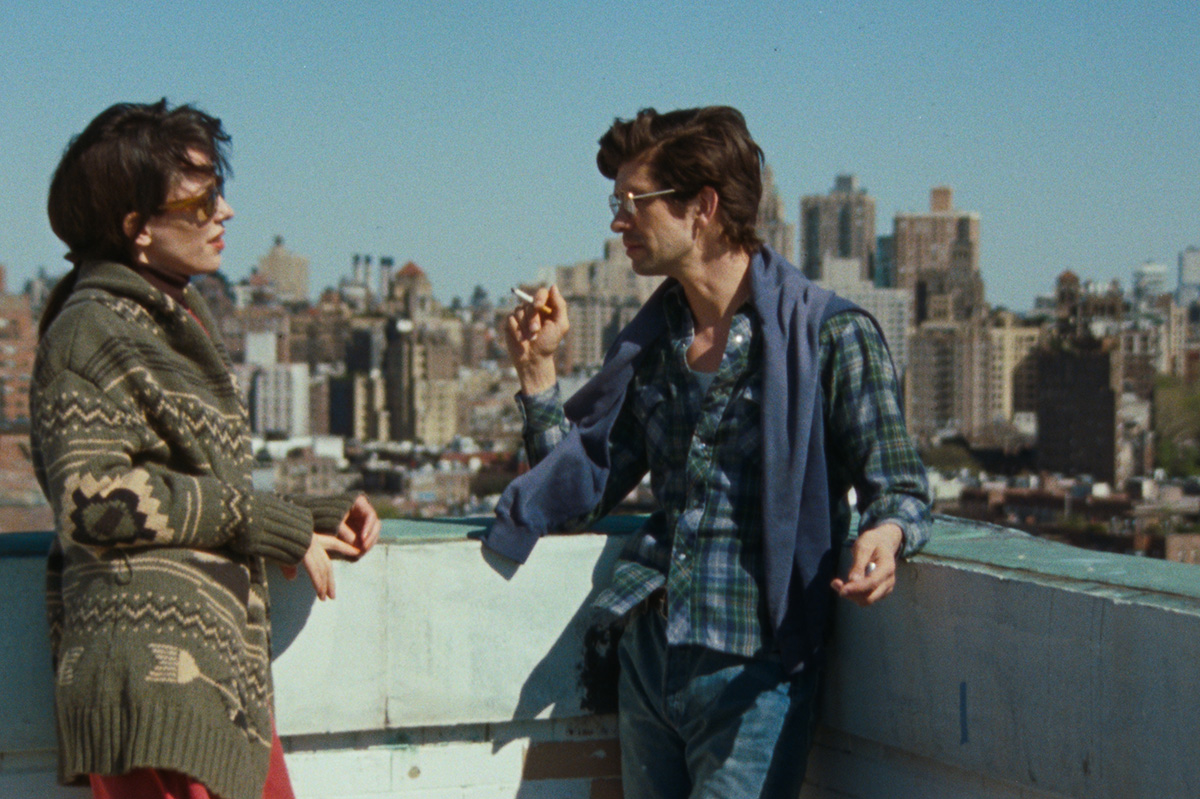
According to writer/director Ira Sachs, “Peter Hujar’s Day” is “a film about what it is to be an artist among artists in a city where no one was making any money.” At least, that’s what Sachs – an Indie filmmaker who has been exploring his identities as both a gay and Jewish man onscreen since his 1997 debut effort, “The Delta” – told IndieWire, with tongue no doubt firmly planted in cheek, in an interview last year.
Certainly, money is a concern in his latest effort – which re-enacts a 1974 interview between photographer Peter Hujar (Ben Whishaw) and writer Linda Rosenkrantz (Rebecca Hall), as part of an intended book documenting artists over a single 24-hour period in their lives – and is much on the mind of its titular character as he dutifully (and with meticulous detail) recounts the events of his previous day during the course of the movie. To say it is the whole point, though, is clearly an overstatement. Indeed, hearing discussions today of prices from 1974 – when the notion of paying more than $7 for Chinese takeout in New York City seemed outrageous – might almost be described as little more than comic relief.
Adapted from a real-life interview with Hujar, which Rosenkrantz published as a stand-alone piece in 2021 (her intended book had been abandoned) after a transcript was discovered in the late photographer’s archives, “Peter Hujar’s Day” inevitably delivers insights on its subject – a deeply influential figure in New York culture of the seventies and eighties, who would go on to document the scourge of AIDS until he died from it himself, in 1987. There’s no plot, really, except for the recalled narrative itself, which involves an early meeting with a French journalist who is picking up Hujar’s images of model Lauren Hutton, an afternoon photo shoot with iconic queer “Beat Generation” poet/activist Allen Ginsburg, and an evening of mundane social interaction over the aforementioned Chinese food. Yet it’s through this formalized structure – the agreed-upon relation of a sequence of events, with the thoughts, observations, and reflections that come with them – that the true substance shines through.
In relaying his narrative, Hujar exhibits the kind of uncompromising – and slavishly precise – devotion to detail that also informed his work as a photographer; a mundane chronology of events reveals a universe of thought, perception, and philosophy of which most of us might be unaware while they were happening. Yet he and Rosenkrantz (at least in Sachs’ reconstruction of their conversation) are both artists who are keenly aware of such things; after all, it’s this glimpse of an “inner life” of which we are rarely cognizant in the moment that was/is their stock-in-trade. It’s the stuff we don’t think of while we’re living our lives – the associations, the judgments, the selective importance with which we assign each aspect of our experiences – that later becomes a window into our souls, if we take the opportunity to look through it. And while the revelations that come may occasionally paint them in a less-than-idealized light (especially Hujar, whose preoccupations with status, reputation, appearances, and yes, money, often emerge as he discusses the encounter with Ginsberg and his other interactions), they never feel like definitive interpretations of character; rather, they’re just fleeting moments among all the others, temporary reflections in the ever-ongoing evolution of a lifetime.
Needless to say, perhaps, “Peter Hujar’s Day” is not the kind of movie that will be a crowd-pleaser for everyone. Like Louis Malle’s equally acclaimed-and-notorious “My Dinner With Andre” from 1981, it’s essentially an action-free narrative comprised entirely of a conversation between two people; nothing really happens, per se, except for what we hear described in Hujar’s description of his day, and even that is more or less devoid of any real dramatic weight. But for those with the taste for such an intellectual exercise, it’s a rich and complex cinematic tapestry that rewards our patience with a trove of deep observations about art, life, and friendship – indeed, while its focus is ostensibly on Hujar’s “day,” the deep and intimate love between he and Rosenkrantz underscores everything that we see, arguably landing with a much deeper resonance than anything that is ever spoken out loud during the course of the film – and never permits our attention to flag for even a moment.
Shooting his movie in a deliberately self-referential style, Sachs weaves the cinematic process of recreating the interview into the recreation itself, bridging mediums and blurring lines of reality to create a filmed meditation that mirrors the inherent artifice of Rosenkrantz’s original concept, yet honors the material’s nearly slavish devotion to the mundane minutiae that makes up daily life, even for artists. This is especially true for both Hujar and Rosenkrantz, whose work hinges so directly to the experience of the moment – in photography, the entire end product is tied to the immediacy of a single, captured fragment of existence, and it is no less so for a writer attempting to create a portrait (of sorts) composed entirely of fleeting words and memories. Such intangibles can often feel remote or even superficial without further reflection, and the fact that Sachs is able to reveal a deeper world beyond that surface speaks volumes to his own abilities as an artist, which he deploys with a sure hand to turn a potentially stagnant 75 minutes of film into something hypnotic.
Of course, he could not accomplish that feat without his actors. Whishaw, who has proven his gifts and versatility in an array of film work including not only “art films” like this one but roles from the voice of Paddington Bear to “Q” in the Daniel Craig-led “James Bond” films, delivers a stunning performance, carrying at least 75% of the film’s dialogue with the same kind of casual, in-the-moment authenticity as one might expect at a dinner party with friends; and though Hall has less speaking to do, she makes up for it in sheer presence, lending a palpable sense of respect, love, and adoration to Rosenkrantz’s relationship with Hujar.
In fact, by the time the final credits role, it’s that relationship that arguably leaves the deepest impression on us; though these two people converse about the “hoi polloi” of New York, dropping legendary names and reminding us with every word of their importance in the interwoven cultural landscape of their era, it’s the tangible, intimate friendship they share that sticks with us, and ultimately feels more important than any of the rest of it. For all its trappings of artistic style, form, and retrospective cultural commentary, it’s this simple, deeply human element that seems to matter the most – and that’s why it all works, in the end. None of its insights or observations would land without that simple-but-crucial link to humanity.
Fortunately, its director and stars understand this perfectly, and that’s why “Peter Hujar’s Day” has an appeal that transcends its rarified portrait of time, place, and personality. It recognizes that it’s what can be read between the lines of our lives that matters, and that’s an insight that’s often lost in the whirlwind of our quotidian existence.
Movies
Sydney Sweeney leads ‘Christy,’ a solid boxing movie about sublimating queer identity and finding redemption
Ultimately, Christy is a decent boxing movie elevated by a much stronger directed second half where violence unexpectedly takes center stage. This is also where Sweeney’s performance kicks into another gear.
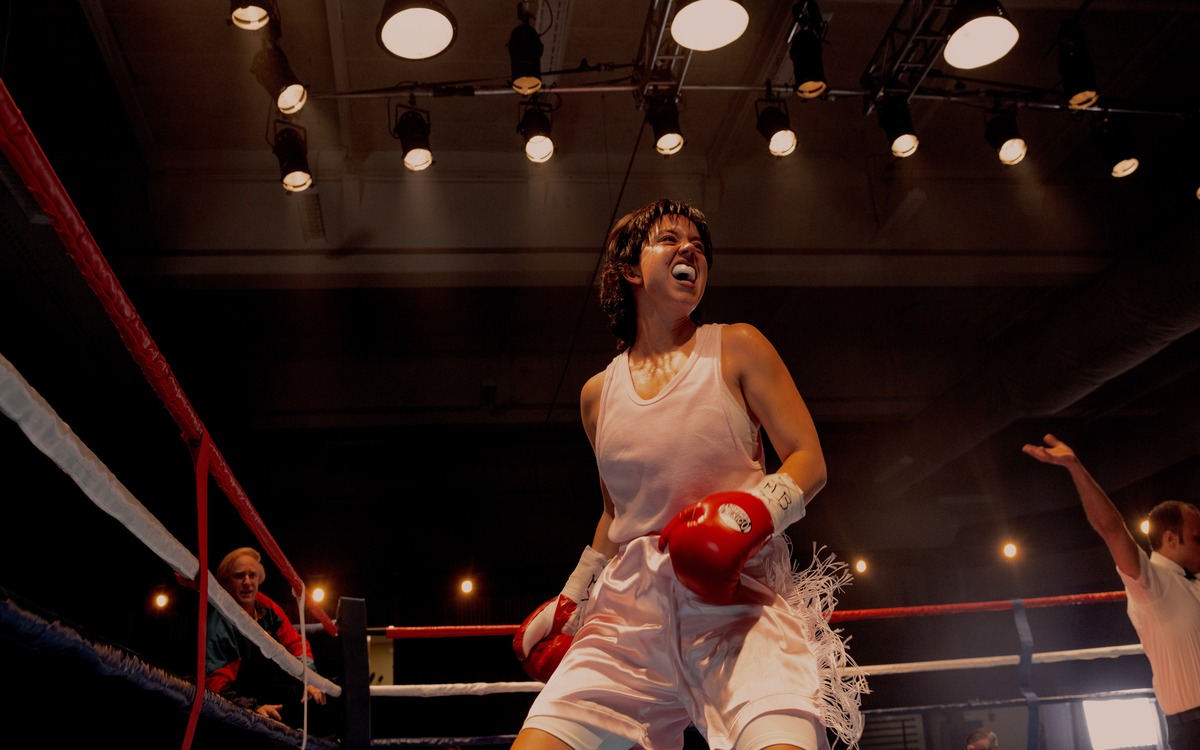
Boxing movies have often been used as vehicles for actors to show what they’ve really got with a transformative, meaty performance. Like music biopics, they can often be constrained by a strict adherence to formula, but in honoring the real-life boxer Christy Martin’s personal story of resilience and survival, director David Michôd (The King) gives Euphoria star Sydney Sweeney the gift of a role in Christy.
The film, the first U.S. release by distribution label Black Bear Pictures, starts off by not shying away from Christy’s queerness, as her quiet, conservative family — mainly her mother played by a never-more-evil Merritt Wever in a bad wig (Marriage Story) — gives her the option of either getting help and stop seeing girls or not receiving any more rent money. Yearning for independence, Christy falls into boxing almost by accident after a break-up, and after quickly falling in love with its raw physicality, finds herself on the forefront of women’s boxing as a sport in the ‘90s. But in marrying her trainer James (Ben Foster), she quickly sublimates her true identity into a hard-as-rock persona. When asked questions by the press about increasing women’s pay and advocating for her fellow boxers, Christy makes it known that she’s not a feminist by nature, throwing out gay slurs just to make the point extra clear.
In the background, away from prying cameras, Christy’s relationship with James grows increasingly volatile. The violence is initially shown offscreen, leaving Christy’s screaming cries for help echoing through her empty home. But eventually, Christy — and the audience — is forced to confront the darkness that lies in plain sight. Michôd and Mirrah Foulkes’ screenplay can’t quite convince us why a man like James has such strong connections to the boxing world, including promoter Don King (Chad L. Coleman). However, it does a good enough job at setting up why Christy sadly finds herself trapped in an abusive relationship.
Ultimately, Christy is a decent boxing movie elevated by a much stronger directed second half where violence unexpectedly takes center stage. This is also where Sweeney’s performance kicks into another gear — watching the life drain from her eyes as she contemplates leaving James, struggling to find her own identity, and realizing that she can’t even turn to her own family. It’s full of complexity that the actor has rarely been able to display with previous roles. The physicality of watching Sweeney in the ring is certainly impressive, too, but it’s also what viewers have come to expect in this specific sub-genre of sports movies. Alongside Sweeney, Foster is an unsettling force of nature here and gives another impressively evil performance.
While the boxing scenes are mostly standard practice, Michôd directs a few key moments and montages with invigorating energy, painting a visceral picture of what Christy’s boxing represented for her as she grows distant from her family and friends. So when a different kind of violence takes center stage, Michôd is able to pull back and let nearly entirely silent scenes play out with terrifying realism. Less is more.
The second half of Christy is also made more interesting by the collision of Christy’s queerness and her coming to terms with not seeing love for women as adversarial to her work in the ring. There’s a tender relationship that blossoms with Lisa Holewyne (Katy O’Brian) and Rosie (Jess Gabor), who Christy confides in as a safety net when she hides away in a hotel room, although these characters feel slightly underdeveloped. The film could’ve benefitted from showing more juxtaposition between the persona that Christy develops and her own self during private moments, and the initial storyline teasing Christy versus her female opponents can feel repetitive.
Beyond some of the awards buzz that Sydney has garnered for her performance, however, Christy should be remembered for what it spotlights about domestic abuse and violence through Christy Martin’s unbelievable story. So for viewers interested in checking it out, it definitely deserves a content warning, and even if it doesn’t fully escape the trappings of boxing biopics, it’s got more up its sleeve than most.
Movies
Queer Broadway icon gets stellar biopic treatment in ‘Blue Moon’
Ethan Hawke delivers award-worthy performance as Lorenz Hart

Even if you’ve never heard the name Lorenz Hart, chances are high you’ve heard some of his songs.
A giant of early 20th century Broadway songwriting, he was a lyricist whose complex blend of wit and wistful romanticism – mostly set to music by longtime composing partner Richard Rodgers – became a significant part of the “Great American Songbook,” performed and recorded by countless musical artists in the decades since. Yet despite his success, happiness eluded him; depression and alcoholism eventually hobbled his career, and he died in 1943 – aged only 47 – from a case of pneumonia he caught after passing out in the rain in front of his favorite bar.
His tragic story might seem an odd fit for a screen treatment from maverick director Richard Linklater, but his latest film – “Blue Moon” in theaters as of Oct. 24 – delivers exactly that. Crafting a mostly speculative and highly stylized portrait of Hart (portrayed in a tour-de-force by longtime Linklater muse Ethan Hawke) on a night that was arguably the lowest point in his professional career: the opening night of “Oklahoma!” – the soon-to-be smash hit composed by Rodgers (Andrew Scott) with new partner Oscar Hammerstein III (Simon Delaney) after their two-decade partnership had been tanked by his personal struggles.
In Robert Kaplow’s theatrically crafted screenplay, Hart shows up early for the post-opening celebration – held, of course, at Broadway’s legendary meeting place, Sardi’s – to hold court with the bartender (Bobby Cannavale) and a young hired piano player (Jonah Lees) while steeling his nerves with a few shots of the whiskey he has sworn to avoid. He’s not there to support his old colleague, however; there’s too much resentment swirling inside him for that. Rather, he’s there to connect with 20-year-old college student Elizabeth (Margaret Qualley), whom he has taken on as a protege – and with whom he has convinced himself he is in love, despite the homosexual inclinations that are mostly an “open secret” within his circle of Broadway insiders.
Constructed as a real-time narrative that follows Hart over the course of the evening, Kaplow’s script could almost be described as a monologue – with interruptions, of course – by the songsmith himself; aided by Hawke’s fearlessly unsentimental performance, the film’s presentation of Hart – a queer man grappling with his own self-loathing in a deeply homophobic era – is almost brutal in its exploration of his emotional and psychological landscape. He has walked a thin line for most of his life, alternately hiding and flaunting his inner truth to navigate his world for decades; and the strain has taken its toll – once heralded as one of Broadway’s brightest talents, his reputation has been ravaged by rumor and he occupies his time by escaping his loneliness through self-denial and liquor. He’s become that guy at the bar who regales you with larger-than-life stories while peppering them with barely concealed bitterness and regret; you can’t help but feel empathy for him, but you’d love to politely extract yourself from the situation at the first opportunity.
There’s something relatable about that situation – from both perspectives – and that’s what keeps “Blue Moon” from becoming insufferable. It’s the kind of movie that makes us cringe, not over the pathetic behavior of its leading character but in anticipation of the next uncomfortable development that’s sure to come as a consequence. He’s a seasoned raconteur, with a polished wit and a prodigious skill with language, and we find ourselves pulling for him both in spite and because of the sense of manic desperation we can feel behind his words.
It’s that almost-grudging empathy we feel for him that gives “Blue Moon” a sense of humanity in the face of what might otherwise seem a relentlessly bleak character study, and keeps us from judging Hart’s impulses toward self-delusion and self-destruction too harshly; and in the end, Linklater’s biopic leaves us with a perspective on his life that emphasizes the legacy he left behind – the poignant lyrics that bespoke an unfulfillable longing for love and connection – and the lasting influence he cast over the generations that succeeded him.
To underscore the latter, the movie imagines a few fortuitous encounters during the festivities at Sardi’s, in which Hart unknowingly drops nuggets of inspiration for such future icons as author E.B. White and a very young Stephen Sondheim. The meetings may or may not not be flights of fancy, but they convey the lasting impact of Hart’s creative contributions in a way that not only feels truthful but provides some amusing moments for buffs of Golden Age Broadway-and-Hollywood lore.
In fact, it should be said that “Blue Moon,” despite the underlying melancholy and the squirm-in-your-seat discomfort that hovers around its edges, is a thoroughly entertaining film; constructed like a play, shot in a style that evokes the cinema of the era (with ongoing references to “Casablanca” to underscore the connection), and wrapped in the nostalgic glow of old Manhattan in its elegant heyday, it bubbles with the kind of wryly sophisticated humor that marked so much of Hart’s own work and thrills us with the feelings it sparks within us.
For that, we must again point to Hawke’s award-worthy performance as the core element; though he accomplishes a physical transformation into the short, balding Hart and masterfully captures his flamboyant personality, it’s the actor’s understanding of the songwriter’s inner landscape that gives the movie its heart, soul, and painfully human perspective.
Even so, it’s a movie with an entire cast’s worth of superb performances. There’s Scott’s carefully measured Rodgers, balancing genuine friendship with the frustrated impatience of navigating a strained relationship in public. Qualley walks a similar tightrope as the object of Hart’s misguided affections, charming us with authentic fondness and diplomatic compassion, and Cannavale provides a solid ground of streetwise wisdom as the bartender who might be his best friend. Patrick Kennedy’s E.B. White, bringing a welcome note of respect and insight, is also a standout.
Yet while the acting in “Blue Moon” may be excellent across the board, it’s Linklater’s direction that drives his cast’s work and ties it all together; a proven chameleon behind the camera, he embraces the theatrical structure of the screenplay with a perfectionist’s aesthetic, and indulges his fascination with time by encapsulating the portrait of a man’s entire life into the observations that can be gleaned from a single night. More importantly, perhaps, he honors his subject by refusing to define Hart’s sexuality to fit modern sensibilities. We can draw whatever conclusions we want, but in the end we have no reason to reject the songwriter’s description of himself as “ambi-sexual” – even though, with its undercurrent of jealousy between two ex-partners, it’s hard not to take note of some very gay implied subtext.
In the end, Hart’s sexual “label” is irrelevant; his loneliness is what matters, the longing to love – and to be loved – which we all share, regardless of our sexual makeup.
It’s the tragic beauty of that universal pang that comes through in all of the timeless lyrics that Lorenz Hart wrote, and it comes through in Linklater’s excellent movie, too.
Movies
Kristen Stewart talks ‘The Chronology of Water,’ the vulnerable debut feature that proved “impossible” to make (AFI Fest)
“It’s about the things that come out of us,” Stewart says of what attracted her to Lidia Yuknavitch’s 2011 memoir

It took eight years for Kristen Stewart to get her ambitious directorial debut, The Chronology of Water, independently made and financed, and she’s been open about how “impossible” the entire process was following its buzzy Cannes premiere. But for the award-winning actor and writer, the prospect of making something “boring” was more terrifying.
“Being an actor has absolutely fucking nothing to do with the reason that we got this thing made because nobody could have,” Stewart said at a post-screening AFI Fest conversation on Oct. 26, moderated by IndieWire’s Editor-at-Large Anne Thompson. “Logistically, the only reason I was really able to do it is because I had met some people who were at some point sick of hearing me complain about it and just went like, ‘Okay. I’ll try and connect you with the people that can actually realize this.’”
Now with a U.S. distributor in The Forge backing the project, Stewart’s adaptation of Lidia Yuknavitch’s 2011 memoir of the same name will have an Oscar-qualifying theatrical run. The Chronology of Water recounts the author’s personal experiences (played on-screen by a fearless Imogen Poots) through violent family abuse, trauma, and her own relationship with the female body over multiple decades. “I’ve loved a lot of books in my life, but this felt like it should be a movie because it could really have its own body and have its own memory and life,” Stewart said. “[It’s] a movie that is super faithful to the book, not because it’s obsessed with the details, but because it’s obsessed with the form and how it breaks and then reforms itself.”

Thora Birch, who plays Lidia’s sister in the film, admits that she was initially “confused” about how to approach the character. “But then once I realized that I’m just existing in the form of someone’s memories, it was a little bit more freeing,” Birch said. And she explains that as somebody who started acting as a child in films like Hocus Pocus and American Beauty, she had a shorthand and shared understanding on-set with Stewart, a former child actor herself.
While Poots wasn’t present at the screening, Birch spoke highly of her co-star: “She carries the film, basically in a close-up, and that’s incredibly difficult to do. And so my experience working with her was [wanting] to be there and present for her, but also [giving] her a little space … One day, there [were] some eye drops that gave her a really bad reaction, she couldn’t work for like an hour. Normally, you would see a visible reaction from any actor or actress, but she was like, ‘Everything’s fine.’”
Stewart explained why Poots was the right choice to portray Lidia: “Some of my favorite movies ever are when you just cannot get with the decisions that, you know, the woman makes. It’s just [Imogen’s] fucking face! And it’s like how present in this moment she was … There was a mutual rupture that was ready to go, and she’s been working for a long time.”

For the visual look of the film, Stewart shot on 16mm and wanted it to “feel out of time,” like something the audience found hidden away in an attic. The story becomes forceful and visceral through editor Olivia Neergaard-Holm’s (The Apprentice) abrupt style, often cutting conversations and scenes short as Lidia is reliving her uncomfortable memories: “The film encouraged us to cut when we wouldn’t have thought to cut because sometimes that’s, like, what happens when your neurons don’t fucking fire,” Stewart said. “That’s often what it feels like to try and grab at the drags of memory.”

Blood is a key motif, starting from the opening scene. That symbolism, and depicting the female body, was important for Stewart. “It’s not always your choice, but it is something that you have to hold in your fucking hands. And the viscosity of that speaks so much to where it comes from, what it means in given moments,” she said. “[The book] wasn’t just about the things that happened to this person — it’s about the things that come out of us. All of us.”
And when asked by Thompson if the offers have started pouring in for her second feature, Stewart remained as honest as ever: “No! We have to do it again ourselves with our bare fucking hands.”
The Chronology of Water played at AFI Fest, which runs Oct. 22-26 at the TCL Chinese Theatre in Los Angeles. The film will have a U.S. theatrical release in December.
Movies
How ‘The Mysterious Gaze of the Flamingo’ director made a tender AIDS allegory about chosen family (AFI Fest)
After winning the coveted Un Certain Regard award at Cannes, the film has been selected as Chile’s official Oscar submission for Best International Feature.

For first-time director Diego Céspedes, making The Mysterious Gaze of the Flamingo — a film that emotionally oscillates between violent outbursts and empathetic hugs — was all about honoring and celebrating chosen family.
“It’s not just about queer people or AIDS, it’s about the chosen families looking for tenderness. It’s a thing that we all universally look for, a way of resistance,” Céspedes tells The Blade during AFI Fest in Los Angeles. “The most important thing about this film is how these people create family. And how do different people create a family?”
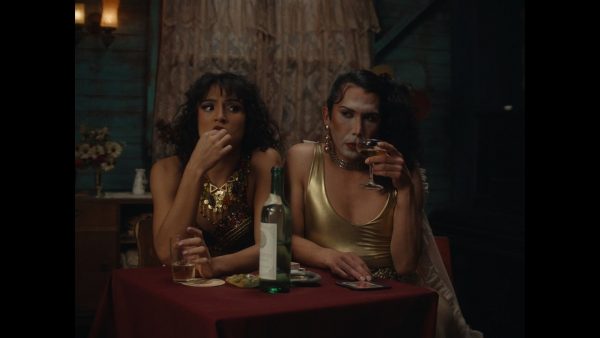
Set in an ‘80s western mining town, the film follows a community of transgender women and genderqueer people who have taken in 11-year-old Lidia (Tamara Cortés) and go to hell and back to protect her. While AIDS is never mentioned by name in the film, Céspedes’ script imagines the epidemic as a plague that spreads to men simply through eye contact. After an unexpected act of violence leaves Lidia shaken, she sets out on a journey of vengeance, and along the way discovers the truth behind the mysterious plague.
Since taking home the top prize at the Cannes Film Festival in the Un Certain Regard section back in May, the film’s worldwide visibility has only continued to grow. Most recently, the project was chosen to represent Chile for this year’s Best International Feature race at the Oscars. The last Chilean film to win this category was 2017’s A Fantastic Woman, Sebastián Lelio’s terrific drama about a grieving trans woman.
“At first, I was kind of scared to have this campaign position in the times that we’re living [in] here. But at the same time, I think the Oscars mean a huge platform — a huge platform for art and politics,” Céspedes says. “To have the possibility to use that, even if we don’t make it to the end, for me that’s OK because this means there are different people [making] films. There’s still a lot of hope and resistance in the world.”
Céspedes wrote the first treatment of the script back in 2019, and after applying to different funds and working to secure a budget through private investors and companies, The Mysterious Gaze of the Flamingo wound up being a co-production between Chile, France, Belgium, Spain, and Germany. “That [was] what took the most time,” he says.
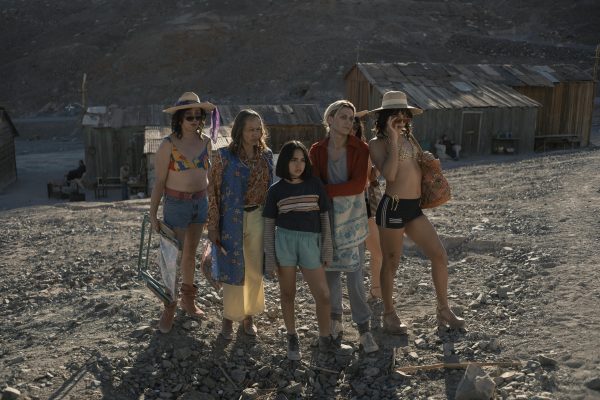
Throughout the year-long casting process, Céspedes and his team went for a mix of working and non-professional actors, with the goal of pushing new faces forward, including Matías Catalán (Bitter Gold), who plays Flamingo, Lidia’s mom. “I think we cast the entire queer community in Santiago to look for the characters, because this canteen is not just about transgender women. It has a lot of people on the spectrum of the community,” he says.
The most important character to get right was Lidia, who wound up being played by newcomer Cortés. Crucially, Lidia not only acts as a core member of the chosen family, but gets many solo scenes as the story progresses: “Tamara’s very talented and funny, and the most important thing is that she didn’t have any prejudices about the community. When she was meeting the girls, she didn’t have any questions that [could] be uncomfortable — she just felt natural in that world.”
Despite the ‘80s period setting, Céspedes and his costume and production designers never wanted to try and directly replicate any looks. And that was especially important when designing the vibrant, colorful outfits that Lidia’s family wears during drag performances: “It was more about creating our own rules or creating a world that can have this contrast between this harsh, aggressive desert and this beautiful family, to give the feeling that they were flowers in the desert.”
The Mysterious Gaze of the Flamingo played at AFI Fest, which runs Oct. 22-26 at the TCL Chinese Theatre in Los Angeles. The film will have a U.S. theatrical release this Fall.
Movies
Breakthrough queer performance makes for a memorable ‘Kiss’
Tonatiuh brings a sensitivity that illuminates other elements around him

When queer Argentine author and activist Manuel Puig published his novel “El beso de la mujer araña” in 1976, it’s doubtful he could have dreamed it would one day be turned into a musical. With most of the action taking place between two characters in a cramped prison cell, and a bleak political context casting dark shadows across even its brightest moments, it didn’t exactly seem a good fit for that kind of treatment. And besides, thanks to its open depiction of queer sexuality and the overtly revolutionary tone of its political messaging, he could barely even get it published.
A decade later, it had become a major Hollywood movie, winning an Academy Award for William Hurt; it had also caught the attention of John Kander and Fred Ebb, the composing team responsible for (among other hit musicals) “Cabaret” and “Chicago,” who joined with playwright Terrence McNally to craft an adaptation for the Broadway stage. The resulting show would debut there in 1993, winning seven Tonys and a host of other awards; Puig, sadly, did not live to see it, dying in 1990 of complications from surgery after a life lived mostly in exile over his queer activism and outspoken political beliefs.
Now, the musical incarnation of “Kiss of the Spider Woman” has finally made its way to the screen, courtesy of veteran filmmaker Bill Condon – who, besides his screen adaptations of “Dreamgirls” and “Chicago,” is also responsible for “Gods and Monsters” and the “Twilight” movie franchise – and starring Latina diva Jennifer Lopez in the title role.
For those unfamiliar with the piece, whether in its musical form or any of its earlier iterations, the story centers on the relationship between two cellmates in an Argentine prison – Valentin (Diego Luna), a revolutionary being held as a political prisoner, and Molina (Tonatiuh), a queer window dresser imprisoned for “public indecency” – with very little in common and even less to talk about. Nevertheless, a connection begins to form between them when Molina decides to pass the time between them by narrating the story of his favorite movie – a glossy old Hollywood musical romance starring his most beloved Golden Age star, Ingrid Luna (Lopez) – and Valentin is drawn in despite his disdain for Molina’s trivial interests and seeming lack of political conscience. As the days pass and Molina continues his narrative in installments, their forced cohabitation begins to deepen into an unlikely friendship – and maybe more.
Of course, there are dark secrets in play, too, hidden agendas and undisclosed truths that strain their trust between each other; nevertheless, as they continue to bond, through both the escapist fantasy of Molina’s ongoing cinematic “recap” and the harsh brutalities of their shared reality, they find an intimacy that helps them transcend their perceived differences in a place designed to crush both their humanity and their hope.
In Condon’s adaptation, the stage musical is reworked to bring it closer in tone, perhaps, to Puig’s original novel, emphasizing the contrast between the grim and colorless prison cell with the spectacular glitz and larger-than-life glamor that saturate the imagined world of Molina’s recounted movie – and it’s quite a contrast. In these sequences, “Kiss of the Spider Woman” opens up its claustrophobic setting into an elaborate recreation of glossy Hollywood escapism at its Technicolor peak, full of exquisitely staged scenes of romance, action, and Golden Age MGM-level musical choreography, which also permits the film’s two male stars to spread their creative wings even further, by casting them alongside Lopez as parallel characters in the “metafilm” fantasy where so much of the story’s emotional resonance occurs – and where many of the plot details begin to reflect their “real world” circumstances as it goes along. It’s all carried off with excellence, professionalism, and technical wizardry, and the result could easily be described as cinematic “eye candy” that’s sure to please fans of the musical genre.
Yet there’s something vaguely disappointing in the choice to differentiate the two worlds of “Spider Woman” so distinctly and completely. It creates a sense of watching two separate movies that have been spliced together, one a gritty story of oppression and survival and the other the other a wild and campy exercise in nostalgic Hollywood gloss. It’s an effective enough tactic, but what it misses is the blending that happens between the two worlds in the stage production, where fantasy and reality overlap and intertwine, and we can’t help wishing that Condon had taken a more imaginative approach, one that might have translated that magical theatricality to the screen in a uniquely cinematic way.
Still, the message comes across. The story’s deeper explorations – of facing reality without sentiment or escaping it through fantasy, of bridging differences of attitude and perspective through human connection at its most basic level, and perhaps most crucially, of seeing beyond a limited understanding of sexuality and gender.
For that last point, there is no more direct reason for it than the performance of Tonatiuh. Seeing Molina embodied by a queer actor brings a level of sensitivity and truth to the mix that illuminates every other element around him. It’s a breathtaking leap toward stardom from a previously (mostly) unfamiliar performer, equally adept in the musical sequences as with the strictly dramatic material, and it elevates “Spider Woman” simply by being there.
His co-star is equally superb. Luna brings his own brand of sensitivity – and vulnerability – to Valentin; he’s also up to the demands of the musical scenes, going toe to toe with Lopez and a whole crew of dancers and seeming to enjoy every minute of it. Most important, he strikes a chemistry with Tonatiuh that makes their blossoming tenderness toward each other into the true saving grace in their character’s lives – the real world magic for which movie fantasies are only a metaphor – and lingers fondly in our memory long after the film is done.
As for Lopez, she claims the screen when she’s on it, bringing a commanding presence and a hard-working pro’s intensity to her multiple roles as Molina’s beloved actress, her character, and the sinister alter ego of the title. No, she’s not Chita Rivera (but then, who could ever be?), but she’s more than up to the challenge of bringing her own distinct energy to make the part her own.
We can’t deny that “Spider Woman,” which began its theatrical release on Oct. 10, faces an obstacle as the screen adaptation of a popular piece of musical theater; fans of the original will doubtless have expectations going in, and opinions coming out, and there’s nothing to be done about that. While it might have benefitted from a more out-of-the-box handling of the show’s dual reality, what’s important is the purity and resonance of the queer voice that comes shining through it, not just in Tonatiuh’s soulful performance but in the movie’s essential core, and that’s worth more than enough to counter any nit-picky quibbles about its overall approach.
It may not please everyone, but thanks to its remarkable lead performances and the authenticity that illuminates both its drama and its fantasy, it’s got the kind of soft power that can stay with you forever.
Movies
Intensive ‘Riefenstahl’ doc dives deep into a life of denial
German filmmaker spent decades trying to rehab her image
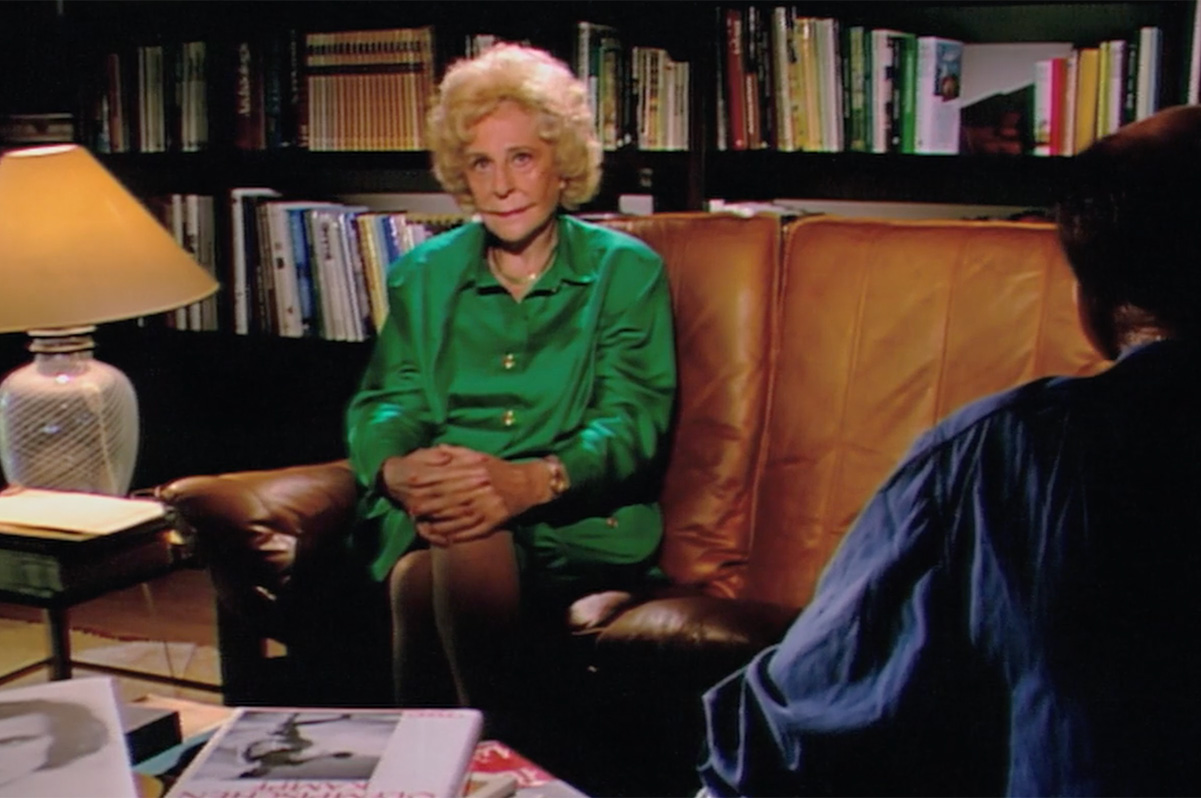
She was an exceptional woman of the early 20th century, an ambitious powerhouse with beauty, intelligence, and a bold creative vision, along with a determination for success that helped her become a pioneering female artist. She rose to prominence as a dancer, actress, photographer, and filmmaker who helped to define the aesthetic of an era, and reached the top of her profession in a male-controlled industry. Her career was relatively short, but her life was long enough to see her movies held up as cinema masterworks, studied by filmmakers and scholars for their blend of technical prowess and poetic vision, before eventually dying at the impressive age of 101 in 2003.
Yet today, you’d be hard-pressed to find anyone eager to celebrate her legacy with anything more than carefully calculated appreciation.
That’s because her name was Leni Riefenstahl, and her filmmaking career ended prematurely not in retirement, nor from illness, nor even because of some scandalous gossip-column tale of adultery or sexual deviance. It ended because she built it in Germany, collaborating with Hitler and hob-nobbing with a who’s-who of infamous Nazis while enthusiastically creating spectacular documentaries that implicitly promoted a romanticized vision of the Third Reich. Her celebrated films were tarnished at the end of the war, their artistic merit eclipsed by the circumstances under which she had made them, and she spent much of the rest of her life as a relative pariah.
Indeed, as the cinema buffs out there probably already know, her name became practically synonymous with the idea of an artist whose work cannot be separated from their “problematic” ethical choices or political views; and while she would resurface when her films found muted-but-sincere appreciation from a new generation of critics, participating in interviews or appearing on the occasional talk show, she would spend the rest of her long life trying desperately to rehabilitate her image and her reputation in the public eye. Yet however often she repeated her claims – that she had never believed in the ideals of the Nazi movement, that she was never aware of the atrocities that took place under Hitler’s reign, that she had always only been motivated by “art” – most of the world seemed to never quite believe them.
Now, with an exceptionally comprehensive documentary from director Andres Veiel, Riefenstahl’s culpability in the Holocaust is up for examination again, and the timing couldn’t be any more perfect.
Granted unlimited access to Riefenstahl’s personal archives by her estate, Veiel draws deeply from the rich collection of imagery, writings, and artifacts contained there to assemble a measured and methodical portrait that is largely drawn from her own words and the pictographic record she chose to keep as part of her official legacy. Tracing her from her upbringing as the child of a stern authoritarian father and a mother who pushed her aggressively to succeed, it follows her rise in the German movie industry, where she gained fame as an actress before making her own first film as a director – “The Blue Light” (1932), a successful debut that caught the attention of Germany’s future führer, eventually leading to her first commission as a filmmaker for the Nazi government.
It goes on to examine the records of her associations with the Nazis during the wartime years, including an implied affair with Joseph Goebbels and an eventual marriage to a leading Wehrmacht officer, as well as a friendship with Nazi architect Albert Speer that would endure beyond his 20-year post-war prison sentence. Even more provocative, it explores her participation in the filming of location scenes for a propaganda film that used child inmates from a nearby concentration camp as extras – something that casts her claimed ignorance of the Nazi agenda in an even less convincing light.
It also utilizes the copious material that documents her lesser-known history after the war, during which she undertook the writing of her memoirs and returned – briefly – to the limelight with an extensive photographic study of the Nuba tribes of Sudan. But it’s her frustrated attempts to escape the stain of her past that provides the recurring theme for this portion of her life, punctuated by footage of her confrontations with interviewers, talk show hosts, and documentarians who asked her the questions she didn’t want to answer. In these moments, we can witness her unfiltered; we take note of her imperious manner and her quick temper, of the vanity which shows through her demands over lighting and makeup, and of the tongue-slips that inadvertently offer a glimpse at something we suspect she’d rather we didn’t see.
Veiel organizes all this information in a sort of kaleidoscopic narrative in which the various periods of his subject’s life bleed across and into each other, forming recognizable patterns which acknowledge and revel in her singular artistic vision, yet come to form an inescapably damning assessment of her long-held denials; though there’s no “smoking gun” that proves her unequivocally to be a liar, there are far too many of those “tongue-slips” to ignore. In the end, it leaves us with the inescapable conclusion that Leni Riefenstahl, whether she believed in the party agenda or not, was willing – at best – to overlook Hitler’s monstrous crimes against humanity for the sake of her own ambitions; even more, it suggests that the only thing she regretted afterward was the loss of her career and the stigma that was steeped upon her. In the end, it’s hard to avoid the conclusion that she, like so many Germans of the Nazi era, wanted to simply pretend they didn’t know what was happening, when they were tacitly condoning it every step of the way.
With its leisurely pace and its brooding, minimalistic score by Freya Arde, “Riefenstahl” weaves a hypnotic effect that makes its two-hour runtime drift by like a dream, but there’s a meticulous logic and a rigorous empiricism to it all – marked by a sparseness of narration from its director, who merely supplies essential context to material he allows to speak for itself – that crystalizes the facts in way that’s entirely rational, and leaves us with an ominous feeling of familiarity with the world in which its controversial subject made her contribution to cinematic history; it’s this which renders Veiel’s documentary with such a profound sense of relevance, an ominous feeling of déjà vu that might be best illuminated through Riefenstahl’s own words from the final recorded conversation included in the film, in which she predicts that it will take “one or two generations” for Germany to reawaken to the “morality, decency, and virtue” to which its people are “predestined.”
Doing the math, her calculations feel chillingly accurate, though perhaps the spirit that has reawakened has more to do with a particular worldview than a specific national identity.
“Riefenstahl” premiered at the Venice film festival in 2024, with an American debut at Telluride earlier this year. Released in New York and screening at venues across the U.S. and Canada this fall, it’s a movie to watch for. Set your radar accordingly.
-

 Books4 days ago
Books4 days agoDavid Stern’s ‘Elevator Boy’ is a visceral deep dive into Weho’s queer past, but serves as inspiration for its future
-

 West Hollywood3 days ago
West Hollywood3 days agoWest Hollywood’s AIDS Monument preserves the pain and power of people lost to the crisis
-

 Features4 days ago
Features4 days agoBaring it all: Andrew Christian signs off the only way he knows how… in style
-

 Los Angeles5 days ago
Los Angeles5 days agoThis queer, Latine-led organization is protecting residents against SNAP cuts and immigration raids
-

 West Hollywood2 days ago
West Hollywood2 days agoFrom nickname to reality, the Rainbow District is made official by the City of West Hollywood
-

 Theater2 days ago
Theater2 days ago‘Table 17’ serves up hilarious musings on love at Geffen Playhouse
-
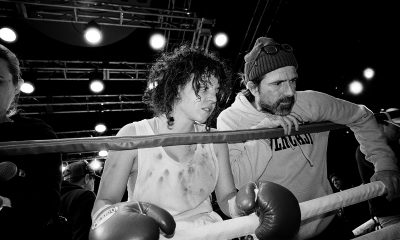
 Movies5 days ago
Movies5 days agoSydney Sweeney embodies lesbian boxer in new film ‘Christy’
-

 Japan3 days ago
Japan3 days agoJapan’s first female prime minister reluctant to advance LGBTQ+ rights
-

 Events4 days ago
Events4 days agoGARRAS — a night of fame, fashion, and community.
-
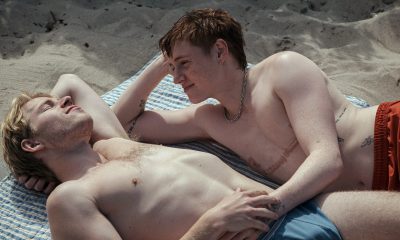
 Movies4 days ago
Movies4 days agoLooking through the steam: ‘Sauna’ and queer intimacy


